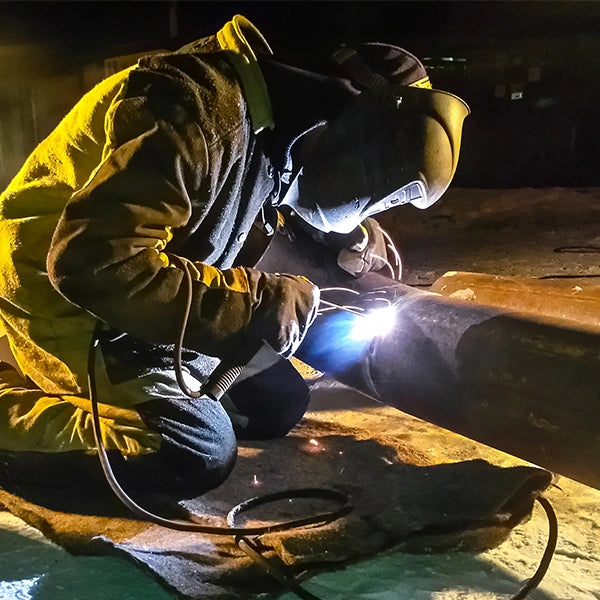Getting Welding Excellence: Unveiling the Tricks of WPS Execution and Optimization
In the world of welding, achieving quality is a search that pivots on the careful implementation and optimization of Welding Procedure Requirements (WPS) By delving into the vital elements, techniques, challenges, and best practices linked with WPS, a world of welding excellence awaits those who are ready to explore its depths.
Relevance of WPS in Welding
The Value of Welding Treatment Requirements (WPS) in the welding industry can not be overstated, working as the backbone for ensuring consistency, high quality, and security in welding procedures. A WPS offers thorough instructions on exactly how welding is to be carried out, including vital variables such as materials, welding processes, joint style, filler metals, preheat and interpass temperature levels, welding currents, voltages, travel speeds, and a lot more. By sticking to a well-defined WPS, welders can keep harmony in their work, resulting in constant weld quality across various jobs.

Secret Components of WPS
Going over the essential elements of a welding treatment specification (WPS) is important for recognizing its duty in welding operations. One crucial aspect of a WPS is the welding process spec, which lays out the particular welding procedures to be made use of, such as gas tungsten arc welding (GTAW) or secured metal arc welding (SMAW) By incorporating these key elements right into the WPS, welding procedures can be standardized, making sure quality, efficiency, and safety in welding operations.
Approaches for WPS Optimization

Second of all, training and qualification of welding personnel according to the certain requirements of the WPS is vital. Giving comprehensive training programs and making sure that welders are licensed to perform treatments laid out in the WPS can bring about better welds and reduced rework.
Additionally, leveraging innovation such as welding software application and surveillance systems can assist in optimizing WPS. These tools can help in tracking variables, making sure criteria are within specified limitations, and offering real-time feedback to welders, allowing them to make immediate modifications for improved weld high quality.
Usual Obstacles and Solutions
Facing obstacles in carrying out the strategies for WPS optimization can impede welding operations' effectiveness and quality. One usual difficulty is inadequate training or understanding of the welding treatment specifications (WPS) amongst the welding group.
Another challenge is the lack of correct documentation and record-keeping, which is vital for WPS optimization. Without clear records of welding parameters, products utilized, and inspection results, it becomes challenging to identify areas for renovation and ensure consistency in welding processes. Executing a robust documentation system, such as electronic welding administration software program, can help improve record-keeping and facilitate data evaluation for constant improvement.
In addition, irregular welding devices calibration and upkeep can position a substantial difficulty to WPS optimization. Normal equipment checks, calibration, and maintenance timetables should be adhered to purely to guarantee that welding parameters are properly managed and maintained within the defined tolerances (welding WPS). By resolving these usual challenges with proactive solutions, welding procedures can enhance effectiveness, top quality, and overall welding quality
Best Practices for WPS Application
To make sure effective WPS execution in welding procedures, adherence to market requirements and precise interest to detail are vital. When starting WPS application, it is critical to begin by extensively comprehending the certain welding requirements of the job. This requires a comprehensive evaluation of the welding treatment requirements, products to be welded, and the environmental problems in which the welding will certainly happen.
Once the needs are clear, the next step is to pick the ideal welding treatment that aligns with these specs. This involves consulting the pertinent codes and criteria, such as those provided by the American Welding Society (AWS) or the International Organization for Standardization (ISO), to make certain conformity and top quality.
In addition, recording the entire WPS implementation process is vital for traceability and top quality control. Thorough records need to be maintained pertaining to welding parameters, product preparation, preheat and interpass temperatures, welding consumables utilized, and any hop over to these guys type of discrepancies look at this website from the original treatment. Routine audits and evaluations of the WPS can assist identify locations for improvement and make sure ongoing optimization of the welding process.

Final Thought
Finally, the execution and optimization of Welding Treatment Specs (WPS) is important for attaining welding quality. By comprehending the crucial elements of WPS, applying efficient methods for optimization, addressing common challenges, and adhering to best practices, welders can make certain top notch welds and secure working problems. It is crucial for professionals in the welding market to prioritize the proper implementation of WPS to improve overall welding efficiency and attain preferred results.
The Value of Welding Treatment Specs (WPS) in the welding market can not be overstated, offering as the backbone for making certain consistency, high quality, and security in welding operations. A WPS provides in-depth guidelines on just how welding is to be carried out, consisting of necessary variables such More about the author as materials, welding procedures, joint style, filler steels, preheat and interpass temperatures, welding currents, voltages, travel speeds, and much more. One critical facet of a WPS is the welding process requirements, which outlines the certain welding processes to be utilized, such as gas tungsten arc welding (GTAW) or shielded steel arc welding (SMAW) By incorporating these vital aspects right into the WPS, welding treatments can be standard, guaranteeing top quality, performance, and safety and security in welding operations.
It is important for experts in the welding sector to focus on the correct implementation of WPS to enhance total welding efficiency and accomplish preferred end results.